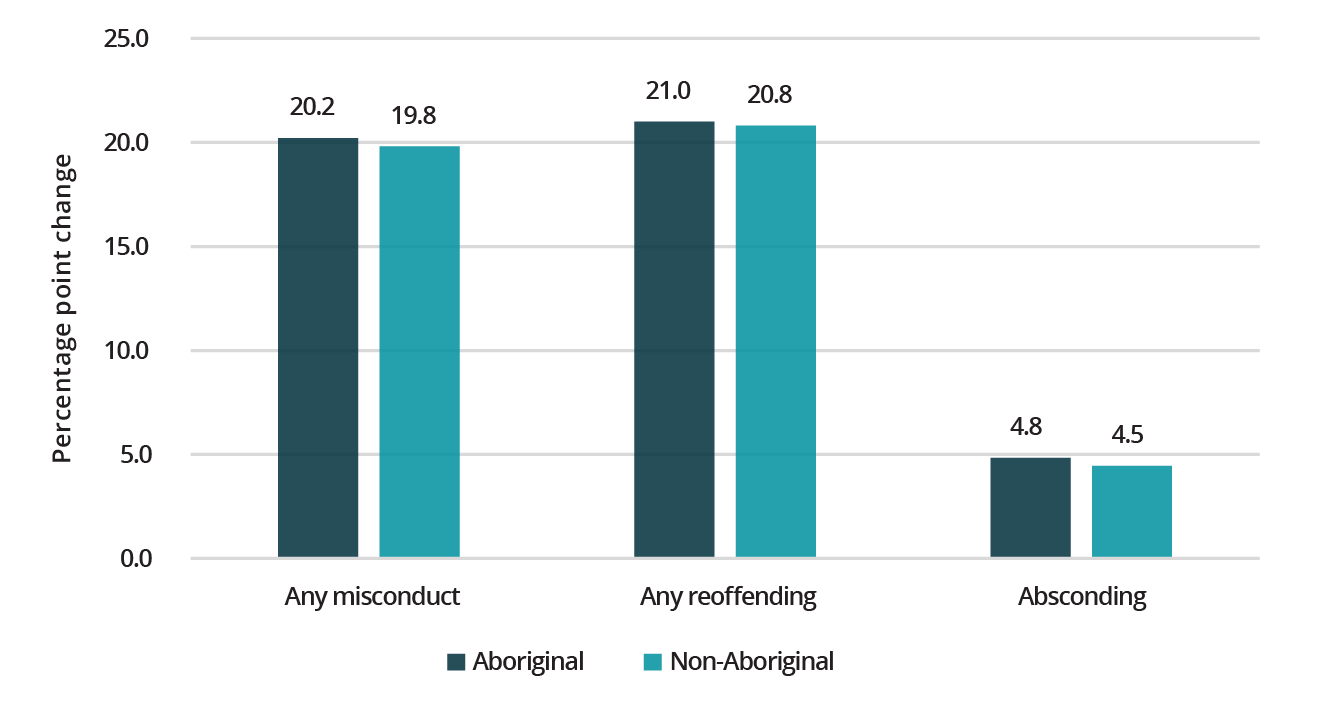Summary
Background
In making bail decisions for defendants arrested by NSW Police, custody managers must deny bail to defendants who have an unacceptable risk of committing a serious offence on bail or failing to appear at any proceedings for the offence (i.e., absconding), among other factors.
We examine whether Aboriginal and non-Aboriginal defendants with a similar probability of receiving bail, have similar risks of reoffending or absconding on bail. We examine this by comparing offending on bail and absconding among ‘marginal defendants’. These are defendants whose release on bail is largely determined by the leniency (or severity) of the custody manager they are assigned to. This enables us to compare custody managers’ risk threshold for each group.
If marginal Aboriginal defendants are less likely to reoffend or abscond on bail than marginal non-Aboriginal defendants, then custody managers are applying a harsher threshold to Aboriginal defendants in their bail decision. In other words, they release non-Aboriginal defendants who are at a higher risk of absconding or reoffending, than Aboriginal defendants.
Key findings
Release on bail results in an increase in the likelihood of any misconduct on bail of 20.2 p.p. among marginal Aboriginal defendants and 19.8 p.p. among marginal non-Aboriginal defendants, compared to their counterparts refused bail. It is unsurprising that released defendants engage in more misconduct than detained defendants. However, the similar impact on misconduct for released Aboriginal and non-Aboriginal defendants, suggest that police apply a similar threshold for release for both groups.
Conclusion
We find no evidence to suggest police custody managers apply a stricter threshold of release on bail to Aboriginal defendants. Further research is needed to identify opportunities to reduce disparities in remand rates between Aboriginal and non-Aboriginal people.
